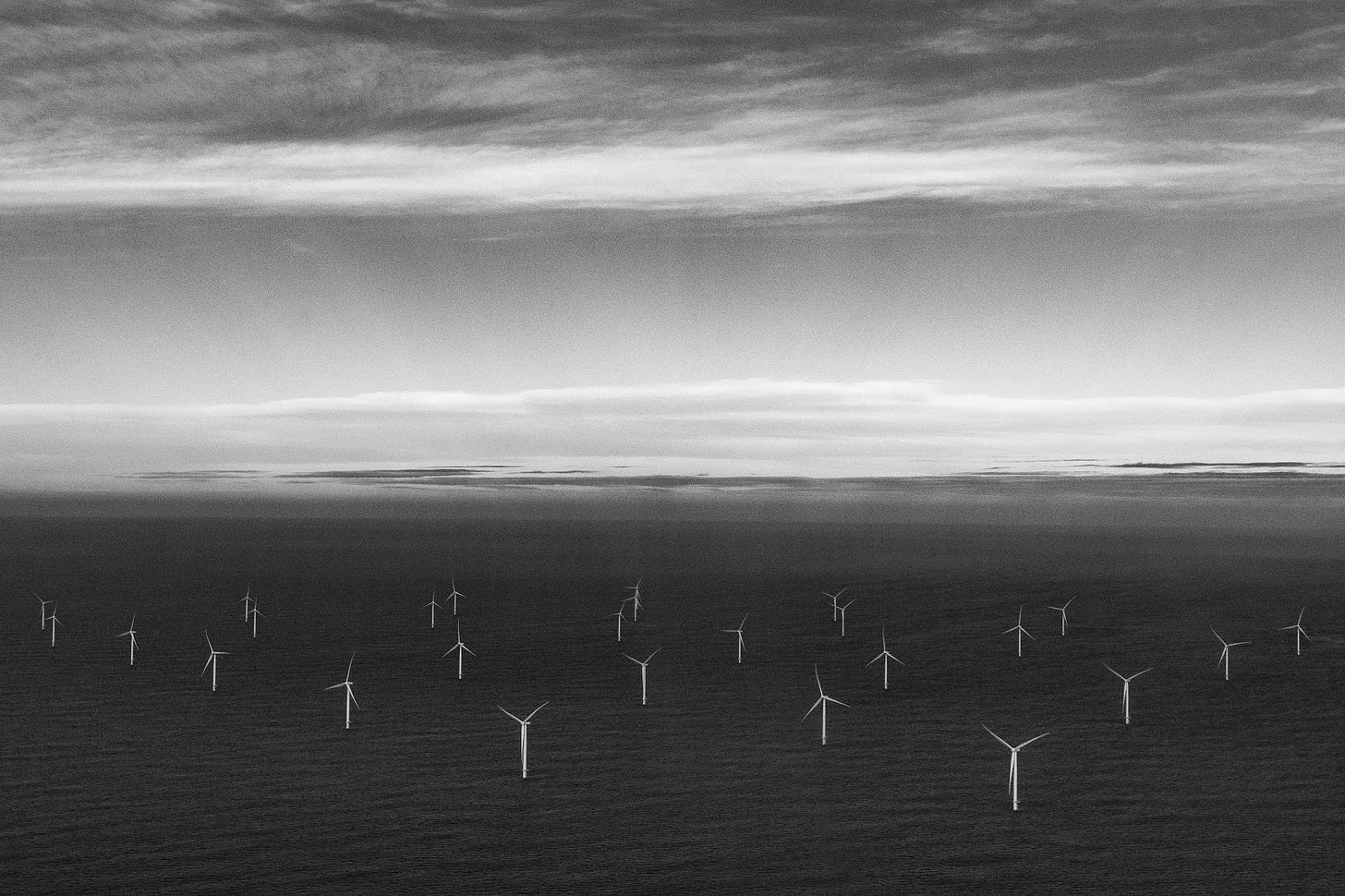Can Big Tech set an example?
There are ways our digital overlords can make progress on emissions
Simple climate action // I S S U E 1 6 // D I G I T A L L I F E
After electrification comes renewables
We’re on a different mission this month, spending more time describing the landscape of digital emissions than setting you a personal challenge. As our reporter Elle Hunt explained last week, the carbon footprint of the technology industry is arguably more straightforward to address because the industry is already electrified, and that’s halfway there.

Encouragingly, the tech sector has been lowering its emissions well ahead of the rest of the economy. In 2007, few thought companies had much choice about where they got their power. Google has showed what’s possible.
Reading for free? Then please send Hothouse to a friend
What you might not know about Google
The search giant uses as much electricity as the state of Deleware. Our searches, your email — probably even this email — all contribute to this footprint. Yet its aggressive renewables policy aims make every last one of those electrons carbon-free
By Michael J Coren
Larry Page and Sergey Brin felt like hypocrites. The founders of Google, the world’s largest search engine, ran enormous data centers powered almost entirely by coal and fossil fuels. It put the Silicon Valley giant (famously founded with “Don't Be Evil” in its credo) in a bind.
“We don’t feel good about being in that situation as a company,” Brin said in 2007. “We feel hypocritical.”
The pair announced that year Google would secure one gigawatt of energy from renewables — enough to power San Francisco — and do it cheaper than coal. At the time, wind and solar were still more costly than all fossil fuels. One commentator at a major bank called the distraction the biggest risk to Google’s profits.

“We see technologies we think can mature into very capable industries that can generate electricity cheaper than coal,” Page argued, “and we don’t see people talking about that as much as we would like.” The company was already consuming electricity equivalent to a quarter of a nuclear power plant. He knew this would grow exponentially in the years to come.
By 2010, Google had purchased the output from wind turbines at the Story County II wind farm in Iowa, the first of 19 such investments worth more than $1 billion. By 2016, Google was matching 100% of its electricity consumption by buying equivalent energy from renewable sources. Now Google says it will go further running entirely on carbon-free energy. By 2030, it plans to become the first company of its size to source, store, or generate all its own renewable electricity everywhere in the world in real time, a massive technical feat.
But this was always as much about accounting, as altruism. Renewables were a way for Google to lock-in energy prices, burnish its image, and mitigate climate risks. And that sentiment has caught on.
BlackRock, the world’s largest asset manager with $7.8 trillion, announced this January it would require portfolio companies to disclose how they plan to eliminate net emissions by 2050. Many more are likely to follow. "Climate risk is investment risk," wrote BlackRock CEO Larry Fink in his annual letter to chief executives. Without a business model compatible with a stable climate, companies "will ultimately lose the license to operate."
While capitalism is losing its luster for much of society (especially young Americans), even some in the establishment see a course correction as unavoidable. It’s hard to imagine a few years ago, but the world’s largest companies may need to achieve net-zero emissions in order to operate beyond we reach 2050.
A decade ago, Google helped show what was possible. Today, almost any business can do what Google did — and save money. Millions of solar panels are installed on rooftops each year. Batteries extend their power well into the night. Financiers have lined up to pay for all this upfront. Even those without a roof can now buy renewables from utilities or regional community solar programs financing wind or solar projects while cutting annual electricity bills by up to 10%.
Sometimes a few well-placed individuals, or a few companies, can help turn the ship of state — or capitalism — in a different direction. We can all show them where to head.
Got two minutes? Tell us how to make Hothouse better!
Hothouse is a weekly climate action newsletter written and edited by Jemima Kiss, Mike Coren and Jim Giles. We rely on readers to support us, and everything we publish is free to read.







